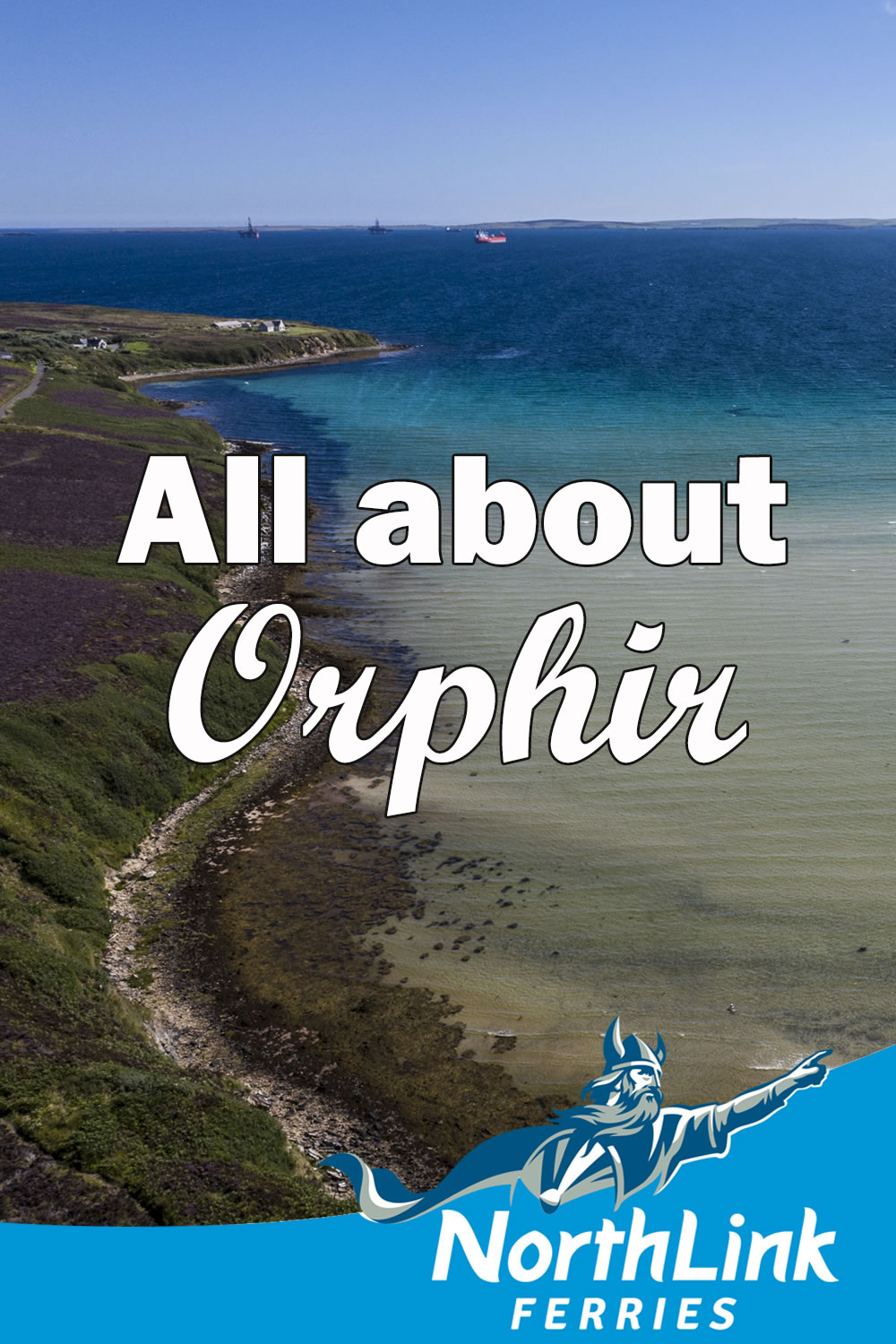All about Orphir
Orphir is a dramatic dark parish in the southwest corner of the Orkney mainland. It has impressive views of Scapa Flow, wild heather hills, beautiful beaches, and some fascinating stories to hear from Norse times and the two World Wars.
The Orphir Round Kirk is thought to have a connection to the most famous story in the Orkneyinga Saga; the murder of St Magnus. To atone for ordering the execution of Magnus, Earl Hakon Paulson went on a pilgrimage to Jerusalem. Upon his return he built the Round Kirk in the style of a church he had seen in the Holy Land.
It is possible to take a road from Stromness to Kirkwall right through the parish. To join it, leave Stromness on the A965, and then turn right onto the A964 to Orphir shortly after the Brig o’waithe. The first few miles of the road are still part of Stenness, with hills on the left and the shore and Hoy hills on the right. When the parish of Orphir begins, the first notable building is the birthplace of Orphir’s most famous son, renowned Arctic Explorer John Rae.
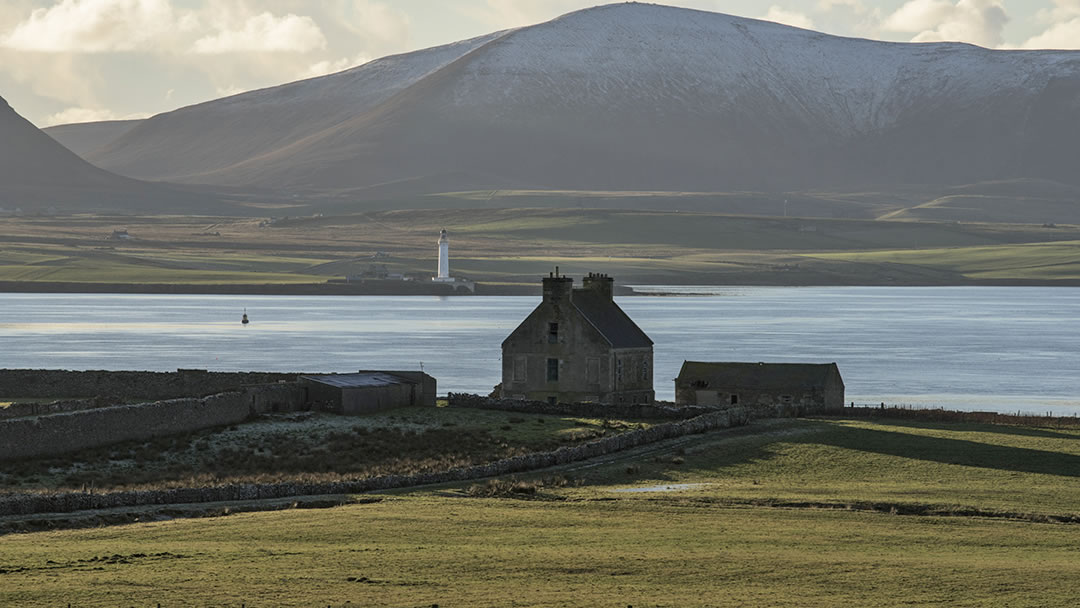
The Hall of Clestrain
This grand old house was built in 1769 by Patrick Honyman of Graemsay. John Rae’s father looked after the Hall of Clestrain when the Honyman family moved to the Scottish Mainland and in 1813, John Rae was born there. He spent his childhood outdoors, sailing and walking in the hills of Orphir, which prepared him well for his later career as an Arctic Explorer.
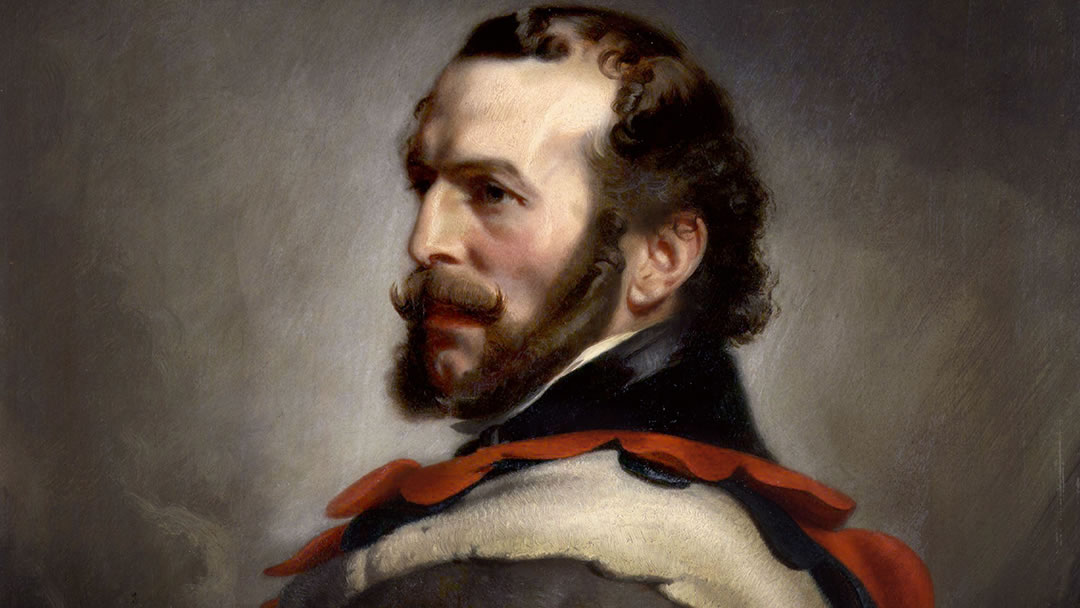
In 1818 the Rae family moved to The Haven in Stromness, and in 1833 John Rae sailed over to Canada. It was here that he discovered the last link in the Northwest passage (a shortcut from Europe to Asia), learned survival techniques from the Inuit people and discovered the grisly fate of the 129 men from the missing Franklin Expedition. When John Rae revealed to the establishment that Sir John Franklin’s ice-locked men had attempted to stay alive by resorting to cannibalism, his reputation was destroyed by Franklin’s grieving widow.
In the years since, the Hall of Clestrain has fallen into disrepair, and a fierce gale ripped the roof off in 1952. John Rae’s achievements have been celebrated more recently and there are plans to restore The Hall of Clestrain as a centre for events and learning.
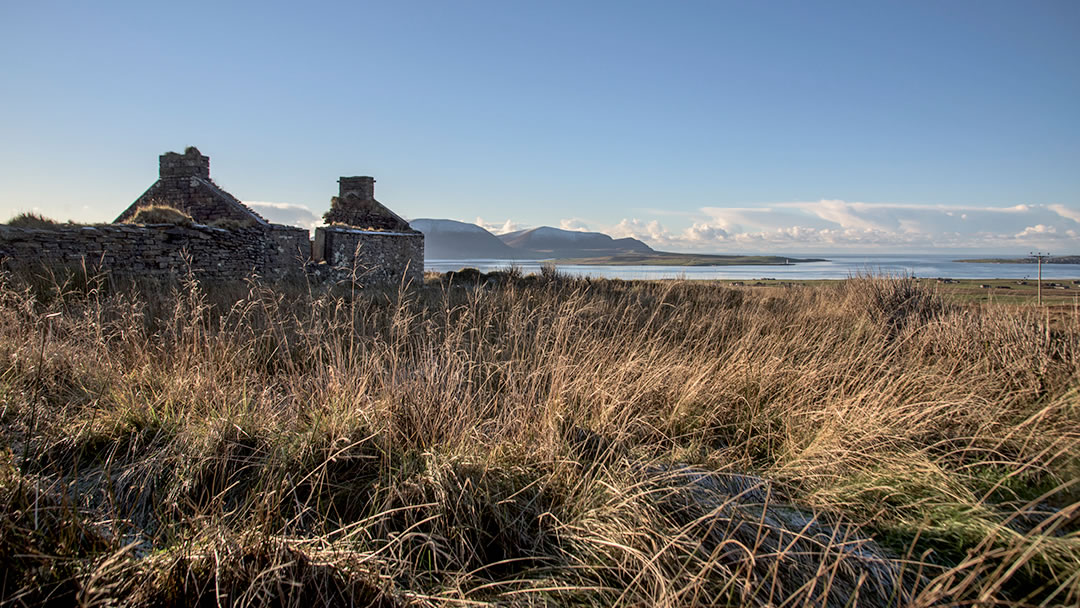
Scorradale road
Just along from the Hall of Clestrain the road splits in two, with the shoreside road leading to Houton and another road leading up through the hills. This is the Scorradale road and the scenery on the crest of the hill is quite breath-taking.
One side looks over the islands of Hoy and Graemsay and out to Stromness, and there’s a handsome ruin of a croft here which we hope is never demolished. This vista looks spectacular in all weathers, and even looks fantastic at night, thanks to the streetlights of Stromness. We’d recommend timing your visit to watch the MV Hamnavoe sailing between Stromness and Scrabster on the Scottish Mainland.
On the other side of Scorradale is a captivating view which looks over Orphir, Scapa Flow, Hoy, and the low-lying island of Flotta with its oil terminal and flare. On the crest of the Scorradale hill there is a parking area perfect for car drivers keen to stop and explore the Orphir hills – more on that later.
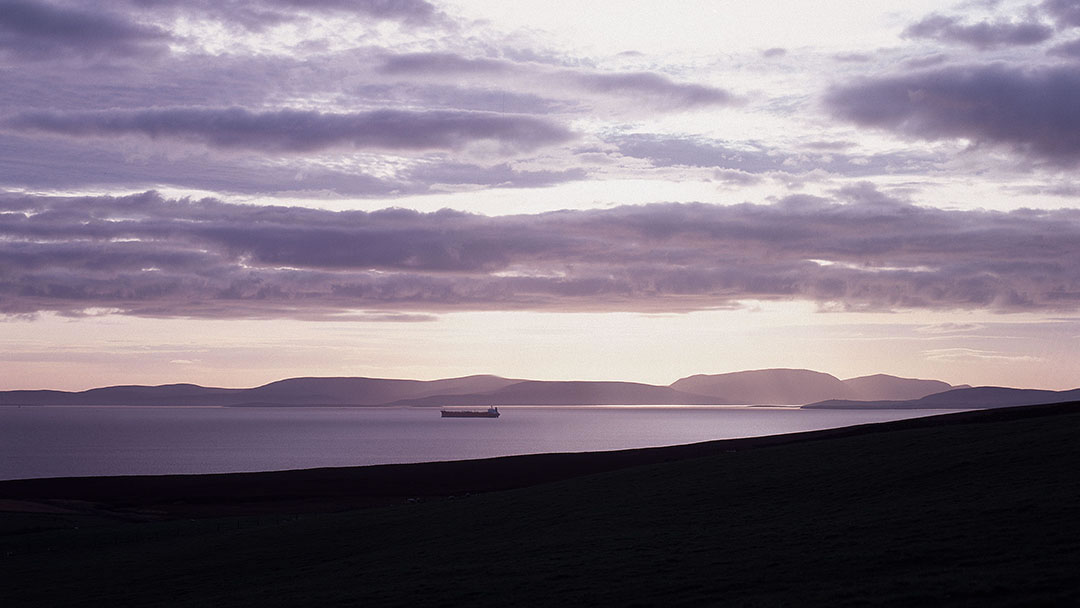
Scapa Flow
Orphir forms the northern shore of Scapa Flow, a massive deep-water natural harbour. Nearly all of Orphir is within sight of these peaceful and haunting waters. The shore of the parish was used during Viking times, and in later years Scapa Flow was used as an anchorage.
In the First World War, the German High Seas Fleet were interned there, and in a desperate act of sabotage, the fleet was deliberately scuttled in 1919. Many of the ships were refloated, but those that remain on the seabed are exciting places to explore for divers today.
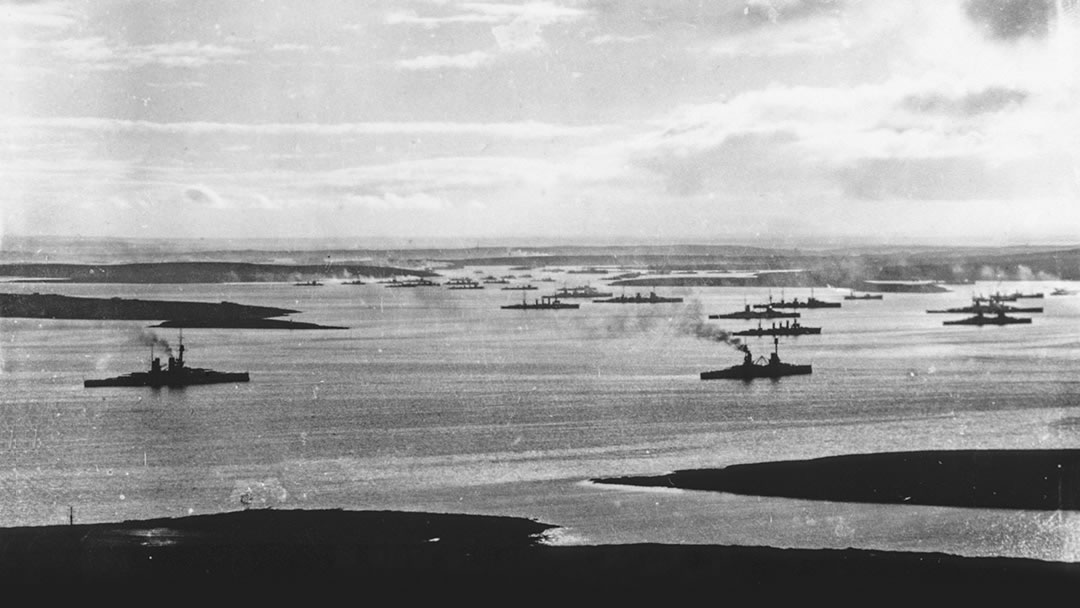
There were air bases and accommodation camps along the Orphir shores of Scapa Flow. From RAF Smoogroo in 1917, Commander E.H Dunning became the first person to land an aircraft on a moving ship. He died five days later attempting to repeat the carrier landing.
In the Second World War, Scapa Flow was used as a harbour by the British Fleet, and the entrances to it were fiercely protected. Visitors to Orphir will see wartime look out points dotted along the shore. However, disaster struck in 1939 when a U-boat, on a dark night lit up by a display of the Northern Lights, sneaked into Scapa Flow. A British battleship, The Royal Oak, was torpedoed in an area of Scapa Flow close to Kirkwall and 835 men and boys were killed. This wreck is a designated war grave.
These days large oil tankers and decommissioned oil rigs are the most familiar sight in the peaceful waters of Scapa Flow.
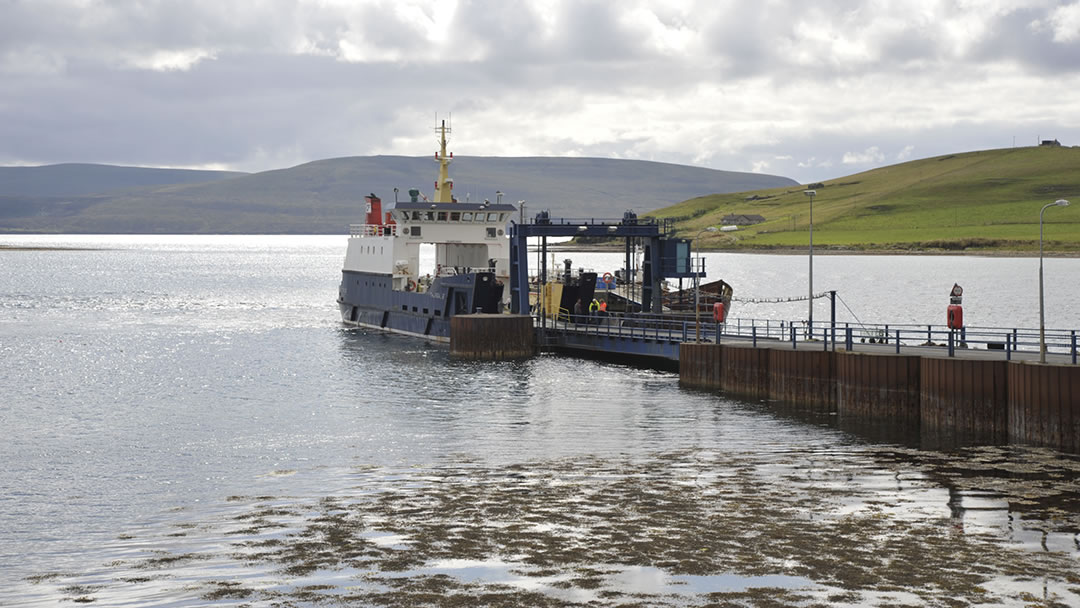
Houton
Many visitors to Orphir will be there for the car and passenger ferry to Hoy and Flotta (pictured above) – this is run by Orkney Ferries, is caught from Houton and for vehicle drivers, should be booked in advance as it is popular especially in summer. The workers at the Flotta Oil Terminal also commute to the island from here.
This sheltered little harbour at the Bay of Houton was used by Norse men as it had a shore suitable for pulling up ships. They named it Hofud, after the nearby headland. It was also used by the British Navy during the First World War as a seaplane base for long-range anti-submarine patrols. During the Second World War, the east side of the Bay of Houton was an anti-aircraft Battery.
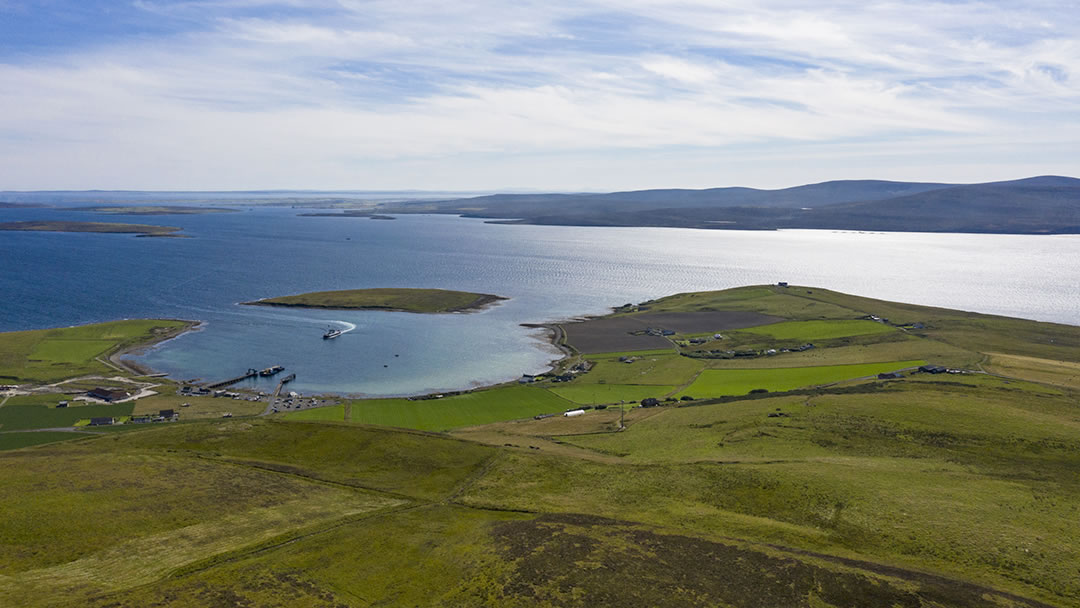
The reason the waters here are so serene is the Holm of Houton, a tidal island at the entrance to the harbour. This island gave Orphir its name, from the Old Norse Orfjara, meaning ‘land joined to mainland at low water’.
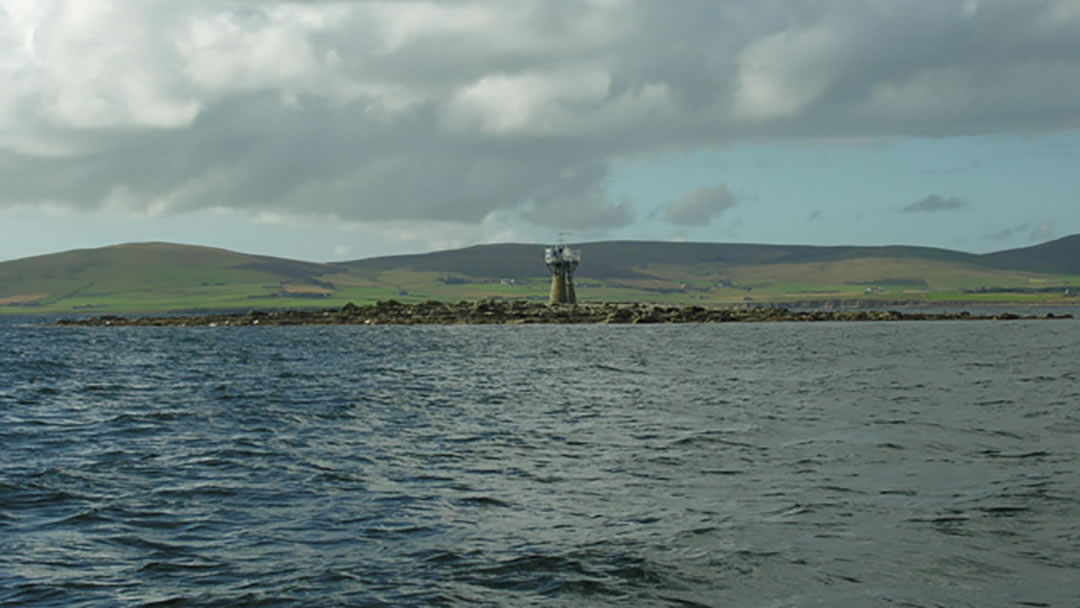
The Barrel of Butter
Out in the water between the Holm of Houton and Flotta is a tiny rocky skerry, once called Carlin but now referred to as the Barrel of Butter. It was given this name because that was the annual price paid to the landowner so that Orphir residents could hunt seals on it.
In 1853 a conical lighthouse was built on the Barrel of Butter, and from a distance, the island looks a little like a submarine rising from the depths. In WW1 this was exactly the mistake made by the British Navy, and they shelled the island!
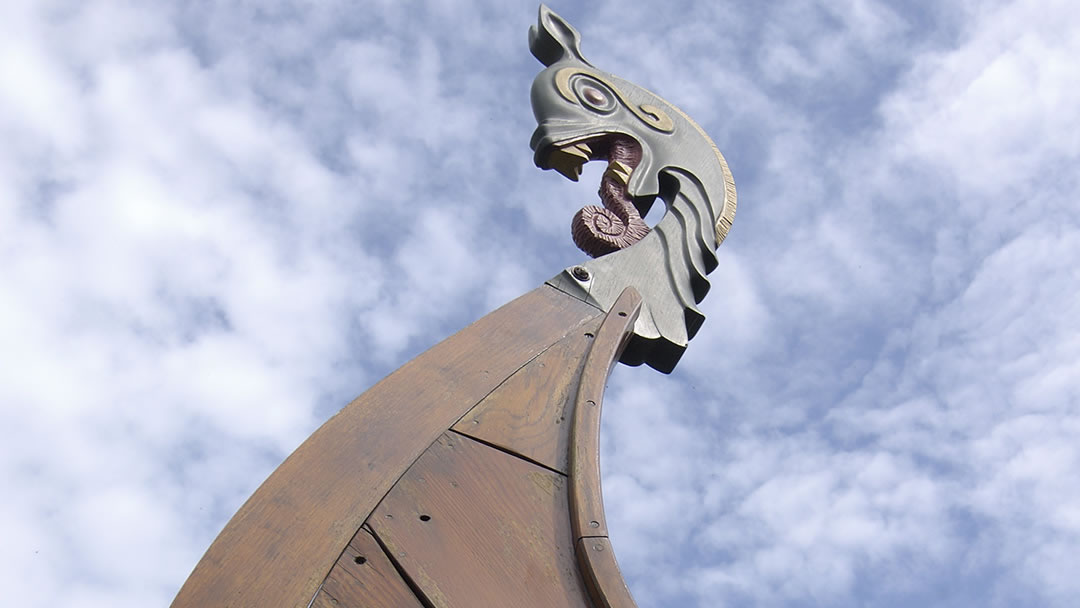
The Orkneyinga Saga centre
During early Norse rule, Orphir was a centre of power. Located amongst trees towards the shore, just outside the Orphir kirkyard, is a place dedicated to the stories of this time. The Orkneyinga Saga Centre is a modern building and though it is not always open, when it is, the unstaffed displays serve as a colourful introduction to those who ruled Orkney 1,000 years ago.
The Orkneyinga Saga was written around 1200 in Iceland. Interestingly, it begins as a folk legend, featuring mythic figures associated with the elements (e.g. Logi ‘flame’ and Snaer ‘snow’) before moving on to historical figures. Sagas were written for social continuity, so the stories of the Earls of Orkney are true to a certain extent. However, some embellishment was always expected to make a saga worth telling! During your visit make sure you take a photo next to the Viking longship prow outside.
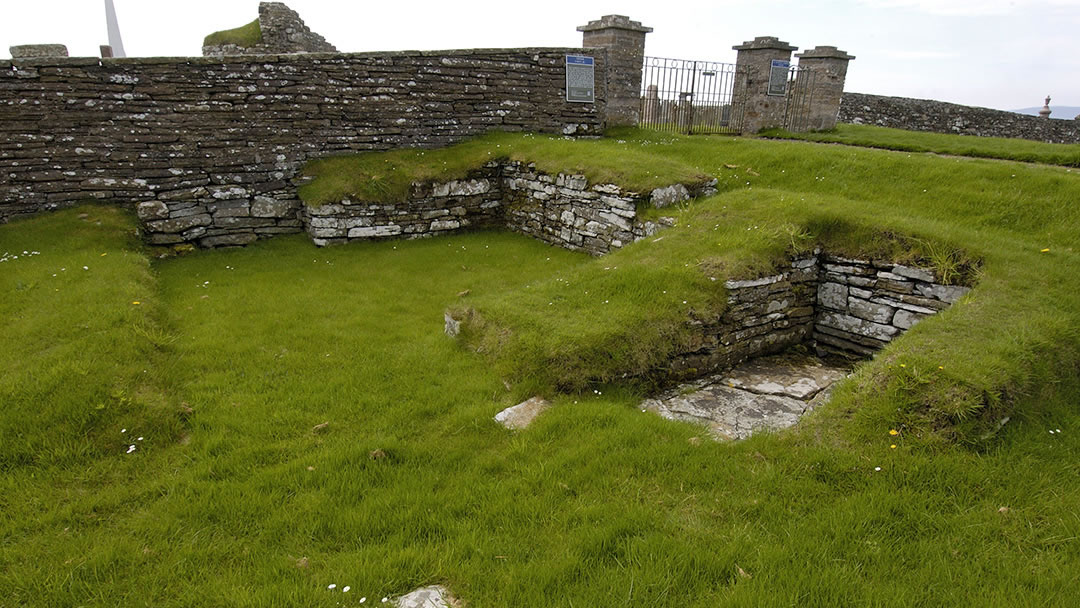
The Earl’s Bu
As you approach the kirkyard in Orphir, you may see the vaguest remains of what is believed to be the Earl’s Bu. This was one of the great estates of the Norse Earls of Orkney in the 12th Century and consisted of a group of farm buildings, storerooms, chambers, a water mill, and a great drinking hall. As these buildings were made with wood and turf on stone foundations so little remains of them today.
In the Orkneyinga Saga the drinking hall was described as being only a few paces away from the Orphir Round Kirk, and it was a place of feasting and drinking, where violent incidents and deaths occurred!
Earl Harald died here in 1127 and in 1136 Sveinn Brestrope was murdered during yuletide celebrations. In 1154 Earl Haraldr Maddadson hid from his many enemies at the Bu of Orphir. It is hard to believe that these larger-than-life stories occurred within the faint shapes of buildings visible today.
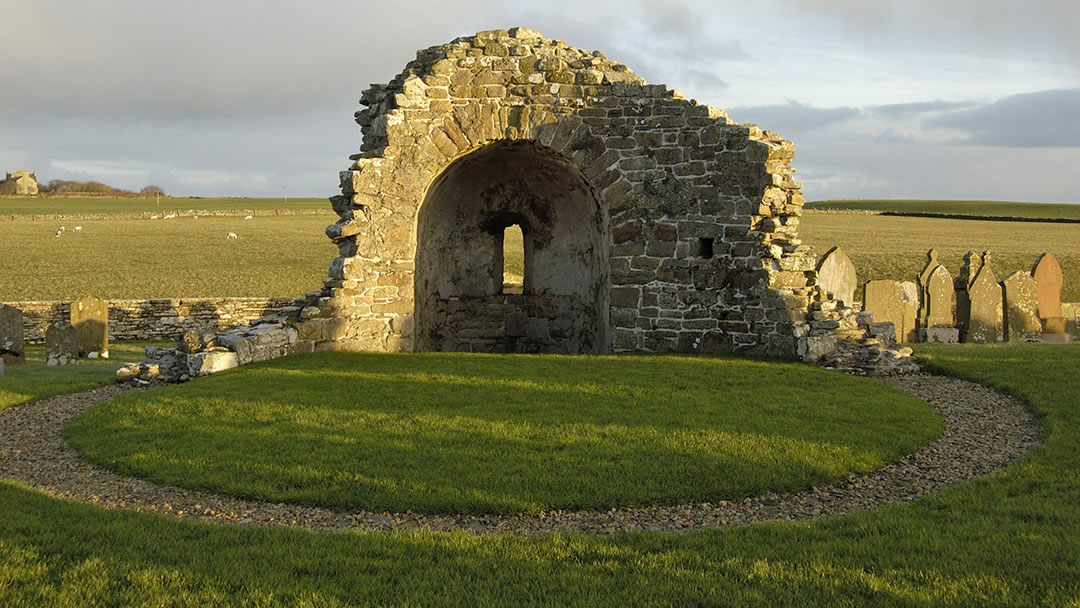
The Orphir Round Kirk
Within the kirkyard is what is left of the Orphir Round Kirk, which was also known as the old St Nicholas Kirk. This lovely building is thought to have a connection to the most famous story in the Orkneyinga Saga; the murder of St Magnus. To atone for ordering the execution of Magnus, his cousin and co-ruler, Earl Hakon Paulson went on a pilgrimage to Jerusalem. Upon his return in 1122 he built the Round Kirk (just 6m in diameter) in the style of a church he had seen in the Holy Land.
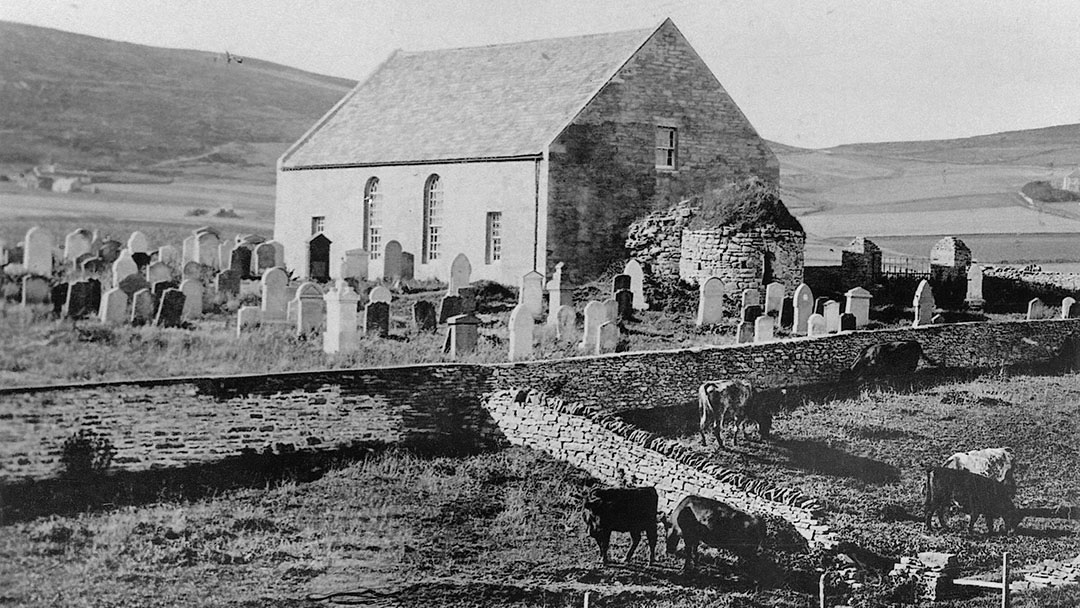
Unfortunately, not much remains of Scotland’s only surviving circular medieval church. Stones were removed for it for a newer church (pictured here) built in 1757 which is now entirely gone. The semi-circular apse of the Round Kirk remains today, along with a small section of the nave’s eastern section.
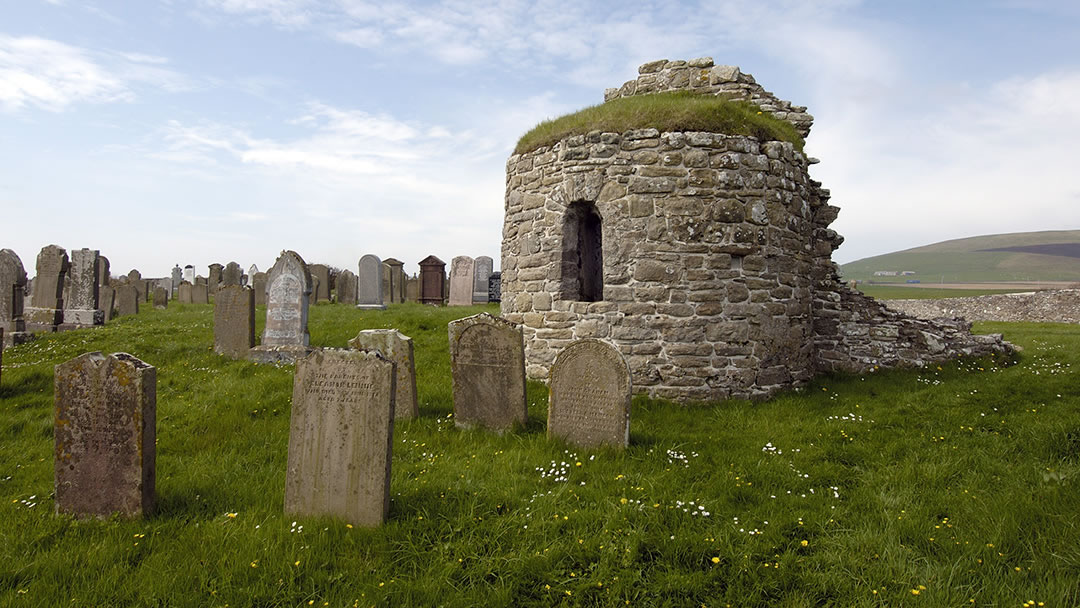
For a great walk, walk out of the kirkyard towards the shore. Cross a footbridge and follow the coastal path east. The path turns north to farmland and then west again to the kirkyard. There is also a St Magnus Way walk that sets off from the Orphir Round Kirk.
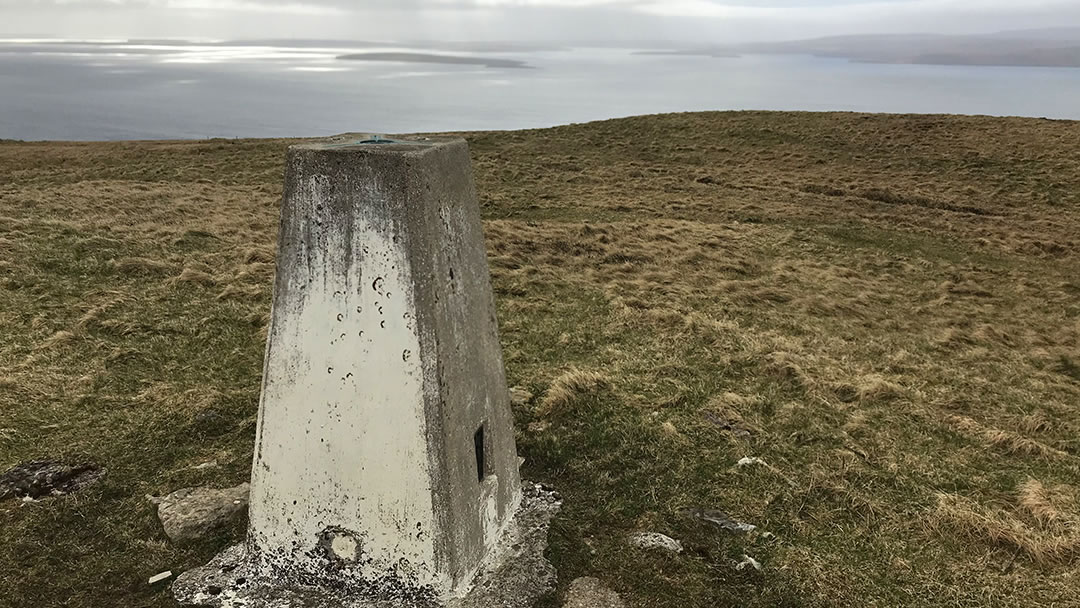
Orphir Hills
Towering over much of the parish, the dark heathery hills of Orphir are quite beautiful indeed. There’s a reasonably easy walk from the Scorradale layby to the top of the Hill of Midland for a fine panorama of Scapa Flow (pictured above).
There are other tracks into the hills, once created for the supply of peat. A look at satellite images on Google maps will show the scarring of peat banks. My first childhood visit to the parish had me bouncing on the back of a truck visiting a peat hill.
Some hills in Orphir are used by the army for training, so plan your visits to these summits with care. Orphir contains the mainland’s highest hill, Mid Hill, at 272m high. It is best reached by parking at the Stenness School and following a track uphill past the Old Manse. Mid Hill offers intrepid explorers a spectacular view across the islands.
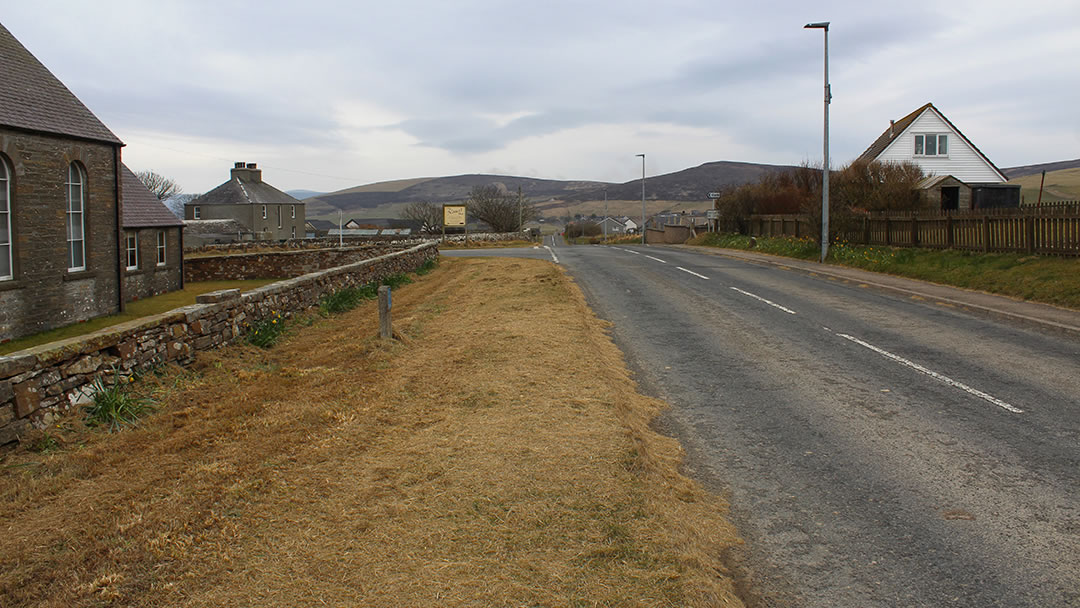
Orphir village
The village in Orphir seems to be growing larger every year and it’s a super place, with a nice community and a friendly school. There’s a fine play park here for any children in your company, and a church, post office and pub.
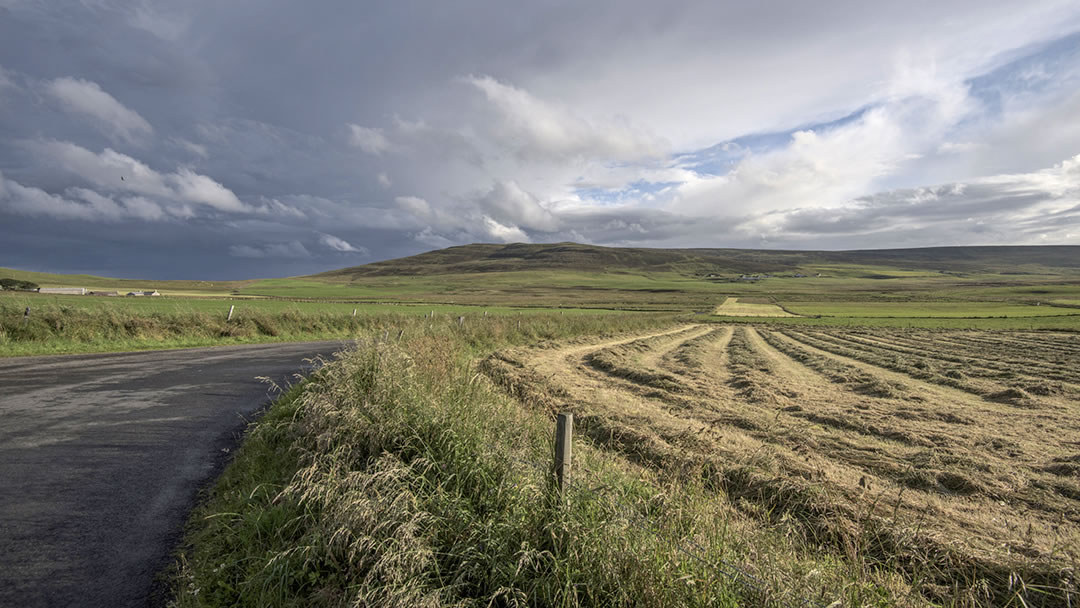
The Battle of Summerdale
There’s another way to get to Orphir from the A965 Stromness to Kirkwall road, and that is to turn right and follow the signposted road shortly after Maeshowe. The meandering Germiston Road will lead you to the A964 through agricultural country and eventually past the Loch of Kirbister. Before you reach the loch though you’ll see a quiet valley where the last pitched battle in Orkney was fought.
The Battle of Summerdale began in 1529 because a Scottish ruler, William Sinclair, was abusing his power in Orkney. Orkney men rebelled and seized Kirkwall Castle and Sinclair fled from the island. A year later the King of Scotland demanded that Kirkwall Castle be handed back. When the Orkney men refused, William Sinclair returned to Orkney with the Earl of Caithness and a force of 500 men. They landed on an Orphir shore and marched over the hills to Kirkwall. It was here that they met the Orkney men, who drove the invaders back (and killed several hundred of them). Several fine Orkney folk tales were told about the battle. Afterwards, a peace was struck between the men of Orkney and the King of Scotland.
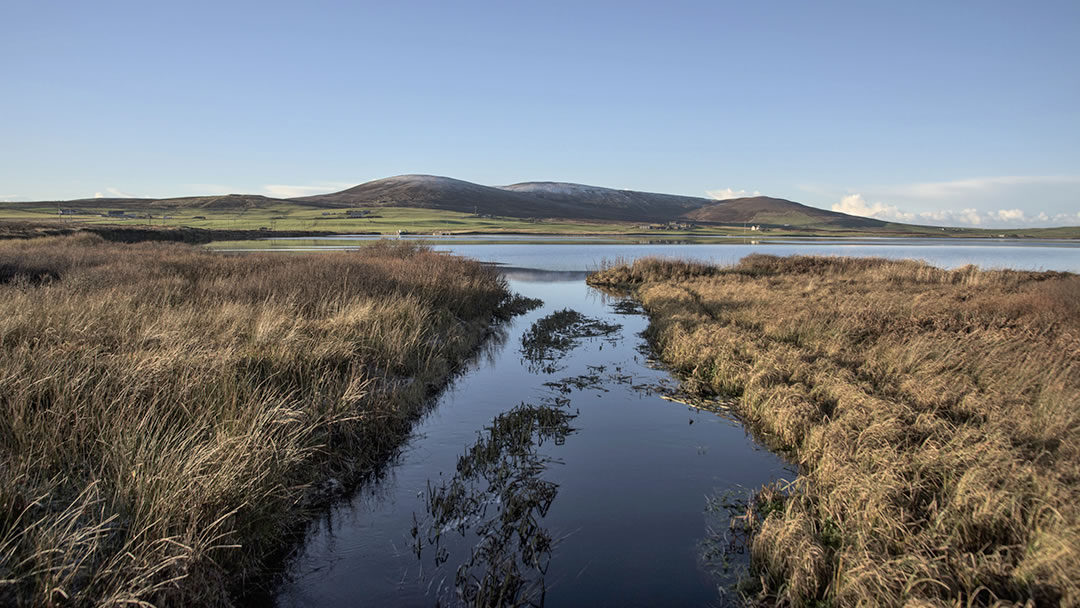
The Loch of Kirbister
The Loch of Kirbister is a large expanse of water and the Water Treatment Works here supplies much of the East Mainland as well as the islands of Shapinsay, Burray and South Ronaldsay. This 1½ mile long stretch of water was carved out of the land during the last ice age by a glacier which squeezed out between Wideford Hill and Keelylang. Kirbister is also known to be a good trout fishing loch.
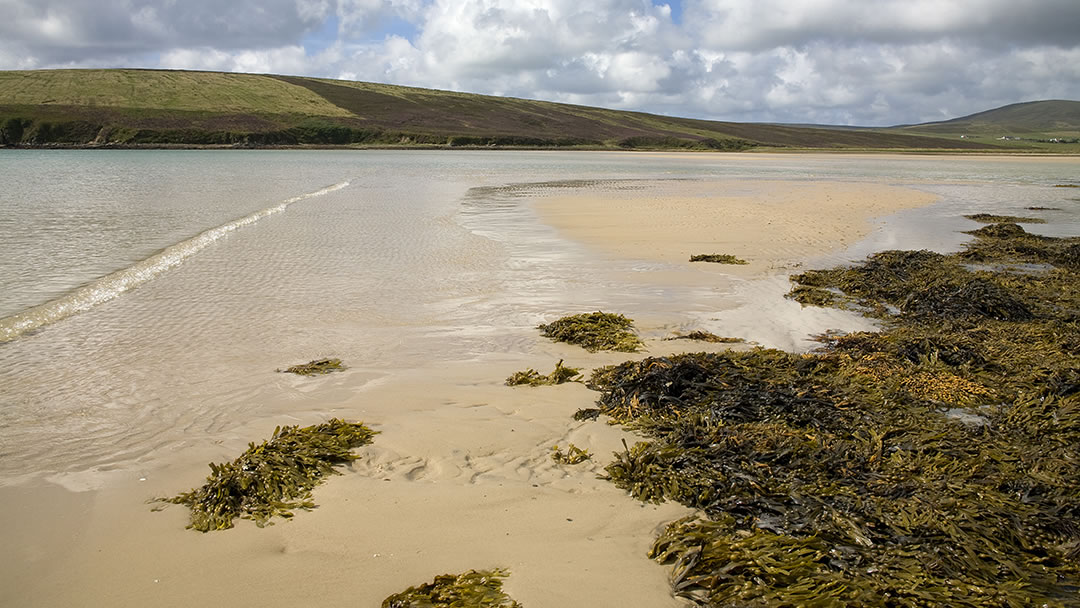
Waulkmill Bay
No trip to Orphir would be complete without a visit to Waulkmill Bay. A long flat sandy bay, Waulkmill is the perfect beach for paddling as the sun will warm up the shallow waters here nicely! The beach can be reached by a staircase (with banisters) down a cliff. At the side of Waulkmill Bay there are sheltered flat rocks, ideal for a picnic. Spoots can be spotted here, using the old Orcadian technique of walking backwards and looking for bubbles escaping the sand.
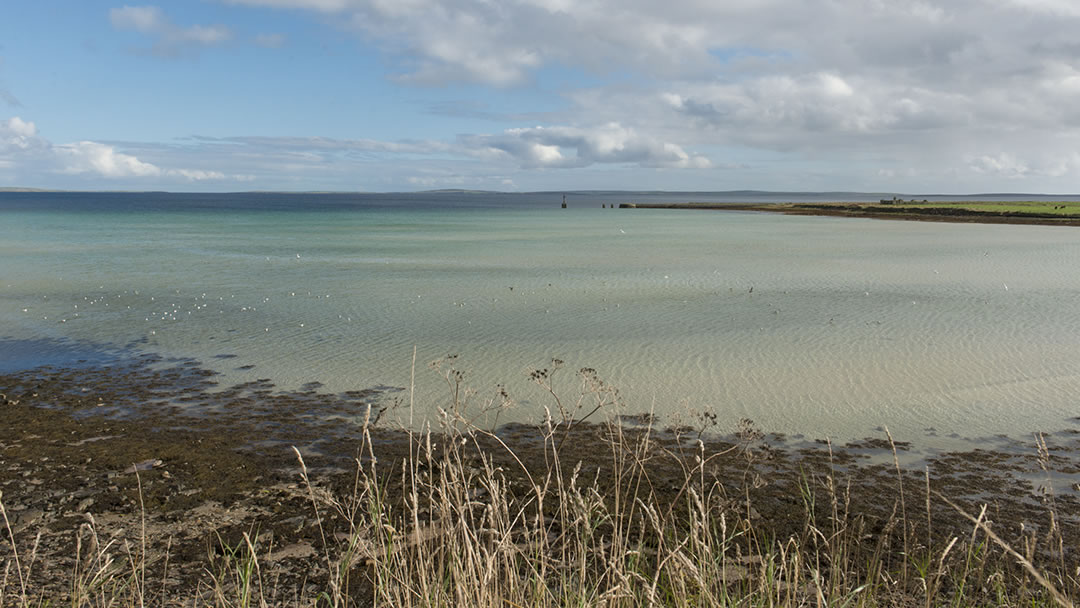
For another bonnie beach we’d also recommend a trip further along the Scapa Flow coast to Swanbister bay (pictured above). This sandy bay backed by wildflowers has a pier and old submarine boom nets can be spotted. It is an Orphir hidden gem well worth seeking out.
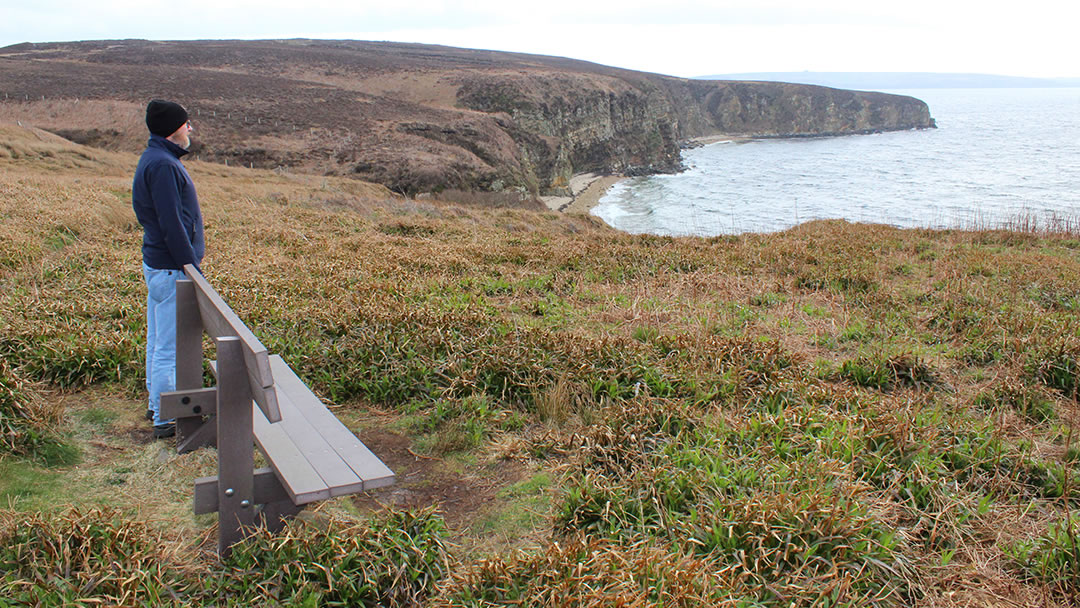
Hobbister Hill
Located on the approach to Kirkwall, Hobbister Hill RSPB Nature Reserve is a rewarding stop. There’s a pleasant circular walk from the car park there that leads 2 miles to Waulkmill Bay which I undertook recently with my cousin Danny. The uneven heathery trail veers close to the low cliffs above Scapa Flow and this is a great place to see and hear fulmars, red-throated divers, and eider ducks (pictured below).
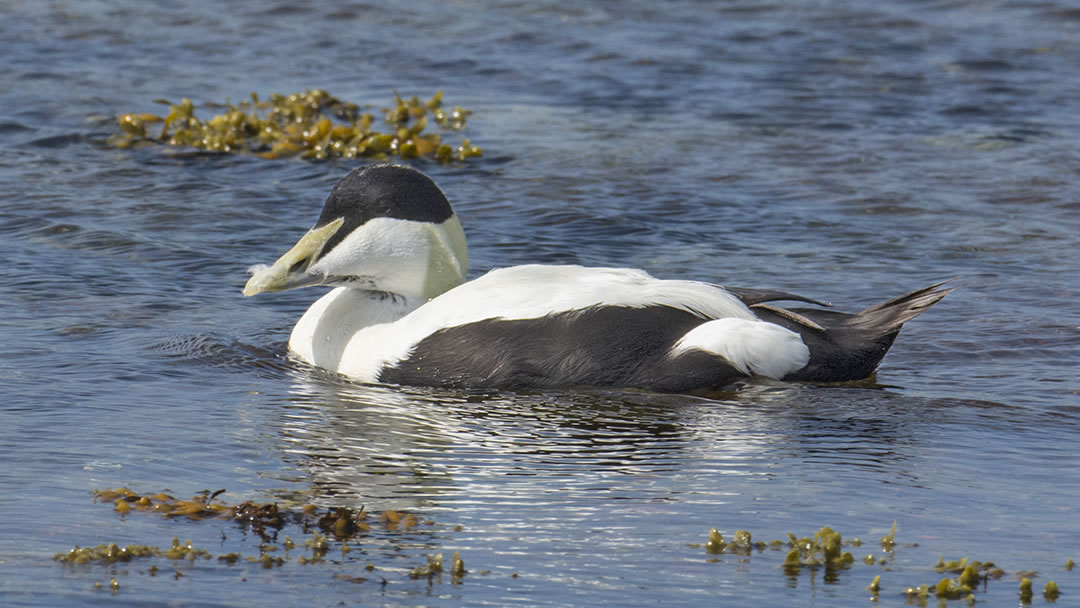
As the walk progresses through the heathery moorland see if you can spot short eared owls, merlin, peregrine, and hen harriers also.
The peat from this area is cut for the Highland Park Distillery. Thinking about how the Hobbister peats give that whisky its smoky, honey-like flavour will keep you going if you undertake this walk on a cold day!
We hope you enjoy your trip to the dark heathery parish of Orphir.
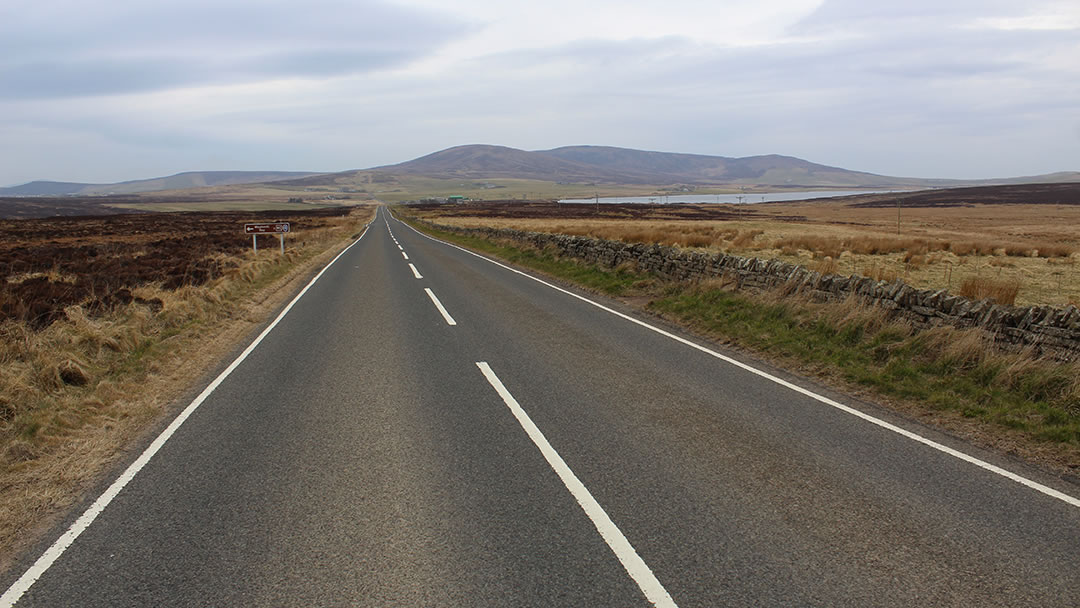
 By Magnus Dixon
By Magnus DixonOrkney and Shetland enthusiast, family man, loves walks, likes animals, terrible at sports, dire taste in music, adores audiobooks and films, eats a little too much for his own good.
Pin it!